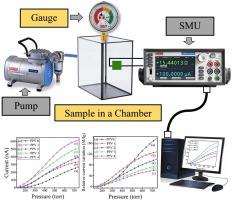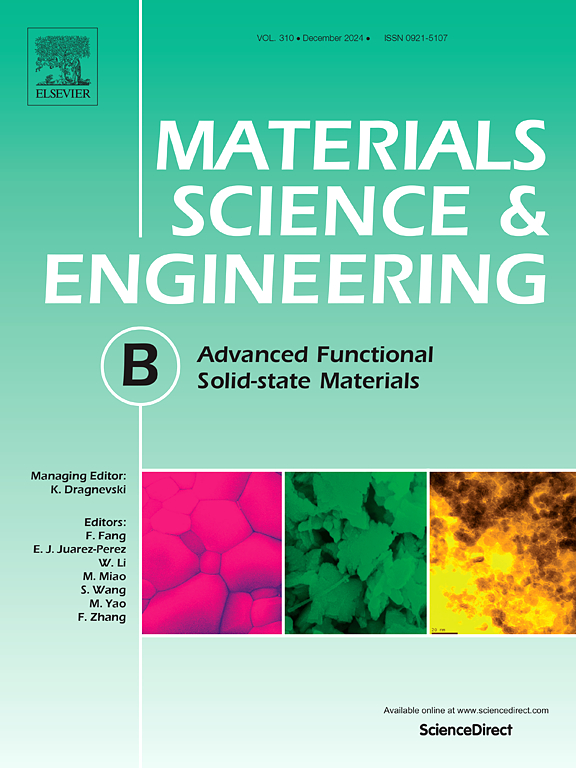Optimised properties of conductive polyaniline-polyvinyl alcohol ink painted on paper for ductile pressure sensor with reduced electrical drift
IF 3.9
3区 材料科学
Q2 MATERIALS SCIENCE, MULTIDISCIPLINARY
引用次数: 0
Abstract
Polyaniline (PANI) powder in its emeraldine salt form was blended with various concentrations of polyvinyl alcohol (PVA) to create semiconducting inks with desired fluid properties. These inks were coated on cellulose paper, and their resistive responses were tested under different vacuum pressures. Enhanced conductivity and reduced creep behavior were achieved by incorporating an O–H bond between the H of PANI and O of PVA, which stabilizes the polymer structure. This bonding minimizes electrical drift, improving the reliability of the synthesized inks for applications such as designing flexible circuits and fabricating thermoelectric generators. The strain field developed under vacuum is accountable for the observed variation in electrical properties. Due to the increase in strain field, the polaron hopping barrier increases, and as a result, the effective conductivity decreases with a decrease in pressure. These ‘use-and-throw’ sensors are economical, adaptable, and environmentally friendly, ideal for various disposable electronics and sensing applications.

优化涂在纸上的导电性聚苯胺-聚乙烯醇墨水的性能,用于制造可降低电漂移的延展性压力传感器
将翠绿盐形式的聚苯胺(PANI)粉末与不同浓度的聚乙烯醇(PVA)混合,制成具有所需流体特性的半导体油墨。将这些油墨涂在纤维素纸上,在不同的真空压力下测试它们的电阻反应。通过在 PANI 的 H 和 PVA 的 O 之间加入 O-H 键,稳定了聚合物结构,从而增强了导电性并减少了蠕变行为。这种键合最大程度地减少了电漂移,提高了合成油墨在设计柔性电路和制造热电发电机等应用中的可靠性。在真空条件下产生的应变场是造成电性能变化的原因。由于应变场的增加,极子跳跃势垒增大,因此有效电导率会随着压力的降低而降低。这些 "用完即扔 "传感器经济实惠、适应性强且环保,是各种一次性电子产品和传感应用的理想之选。
本文章由计算机程序翻译,如有差异,请以英文原文为准。
求助全文
约1分钟内获得全文
求助全文
来源期刊

Materials Science and Engineering: B
工程技术-材料科学:综合
CiteScore
5.60
自引率
2.80%
发文量
481
审稿时长
3.5 months
期刊介绍:
The journal provides an international medium for the publication of theoretical and experimental studies and reviews related to the electronic, electrochemical, ionic, magnetic, optical, and biosensing properties of solid state materials in bulk, thin film and particulate forms. Papers dealing with synthesis, processing, characterization, structure, physical properties and computational aspects of nano-crystalline, crystalline, amorphous and glassy forms of ceramics, semiconductors, layered insertion compounds, low-dimensional compounds and systems, fast-ion conductors, polymers and dielectrics are viewed as suitable for publication. Articles focused on nano-structured aspects of these advanced solid-state materials will also be considered suitable.
 求助内容:
求助内容: 应助结果提醒方式:
应助结果提醒方式:


